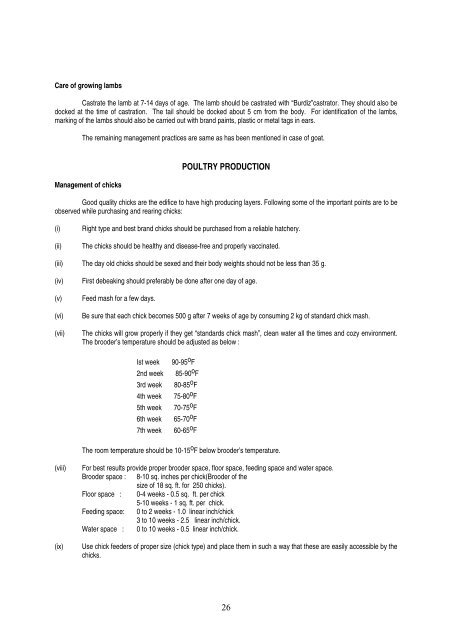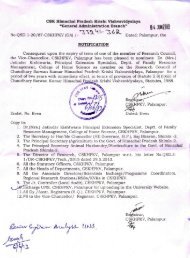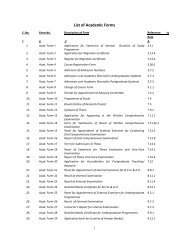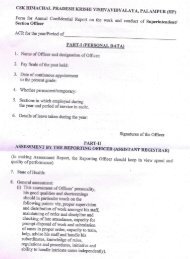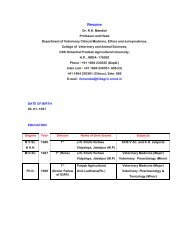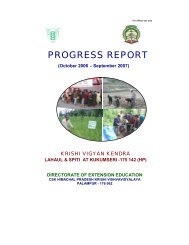animal production - CSK Himachal Pradesh Agricultural University ...
animal production - CSK Himachal Pradesh Agricultural University ...
animal production - CSK Himachal Pradesh Agricultural University ...
You also want an ePaper? Increase the reach of your titles
YUMPU automatically turns print PDFs into web optimized ePapers that Google loves.
Care of growing lambs<br />
Castrate the lamb at 7-14 days of age. The lamb should be castrated with “Burdiz”castrator. They should also be<br />
docked at the time of castration. The tail should be docked about 5 cm from the body. For identification of the lambs,<br />
marking of the lambs should also be carried out with brand paints, plastic or metal tags in ears.<br />
The remaining management practices are same as has been mentioned in case of goat.<br />
Management of chicks<br />
POULTRY PRODUCTION<br />
Good quality chicks are the edifice to have high producing layers. Following some of the important points are to be<br />
observed while purchasing and rearing chicks:<br />
(i) Right type and best brand chicks should be purchased from a reliable hatchery.<br />
(ii) The chicks should be healthy and disease-free and properly vaccinated.<br />
(iii) The day old chicks should be sexed and their body weights should not be less than 35 g.<br />
(iv) First debeaking should preferably be done after one day of age.<br />
(v) Feed mash for a few days.<br />
(vi) Be sure that each chick becomes 500 g after 7 weeks of age by consuming 2 kg of standard chick mash.<br />
(vii) The chicks will grow properly if they get “standards chick mash”, clean water all the times and cozy environment.<br />
The brooder’s temperature should be adjusted as below :<br />
Ist week 90-95oF 2nd week 85-90oF 3rd week 80-85oF 4th week 75-80oF 5th week 70-75oF 6th week 65-70oF 7th week 60-65oF The room temperature should be 10-15 o F below brooder’s temperature.<br />
(viii) For best results provide proper brooder space, floor space, feeding space and water space.<br />
Brooder space : 8-10 sq. inches per chick(Brooder of the<br />
size of 18 sq. ft. for 250 chicks).<br />
Floor space : 0-4 weeks - 0.5 sq. ft. per chick<br />
5-10 weeks - 1 sq. ft. per chick.<br />
Feeding space: 0 to 2 weeks - 1.0 linear inch/chick<br />
3 to 10 weeks - 2.5 linear inch/chick.<br />
Water space : 0 to 10 weeks - 0.5 linear inch/chick.<br />
(ix) Use chick feeders of proper size (chick type) and place them in such a way that these are easily accessible by the<br />
chicks.<br />
26


